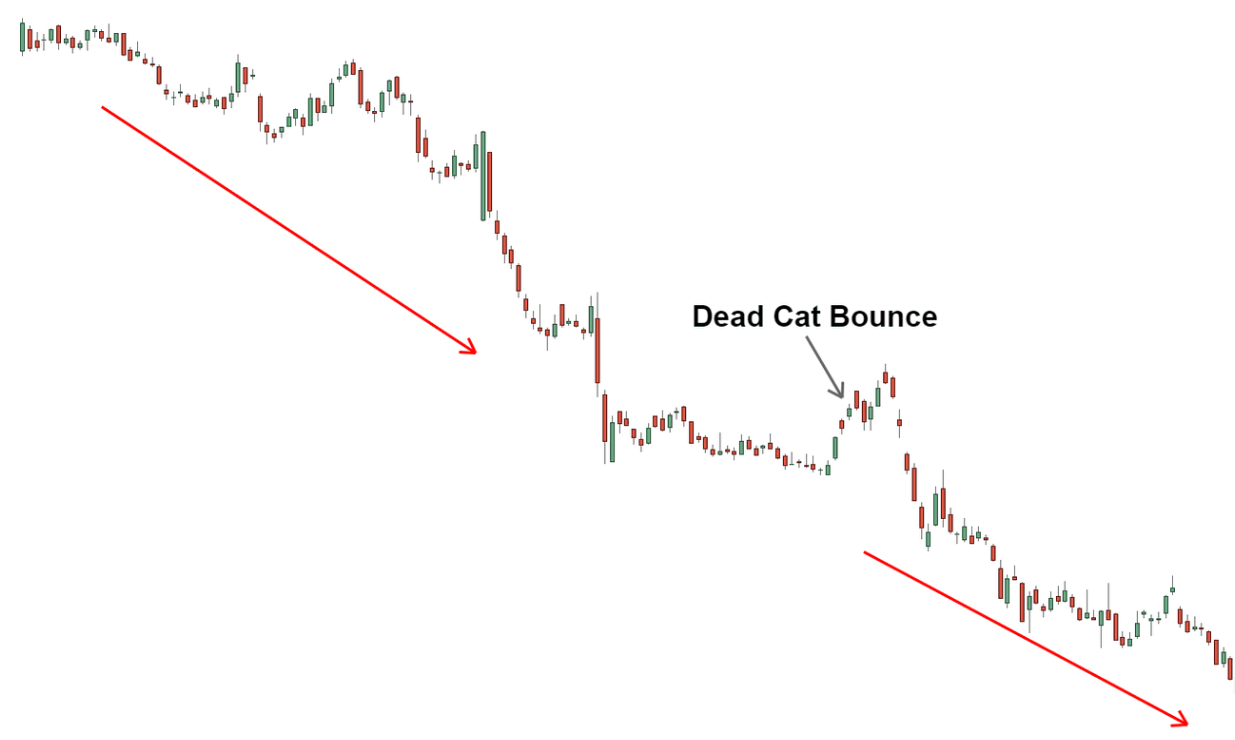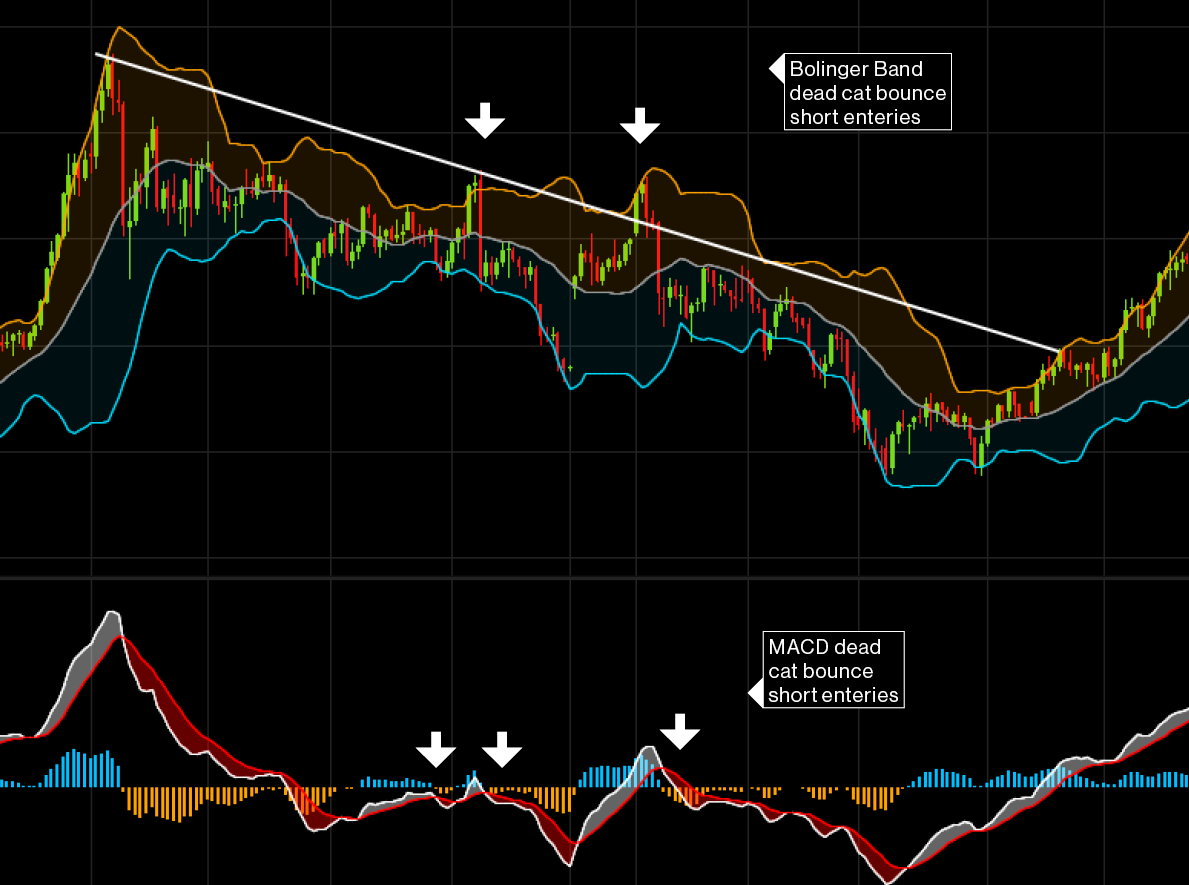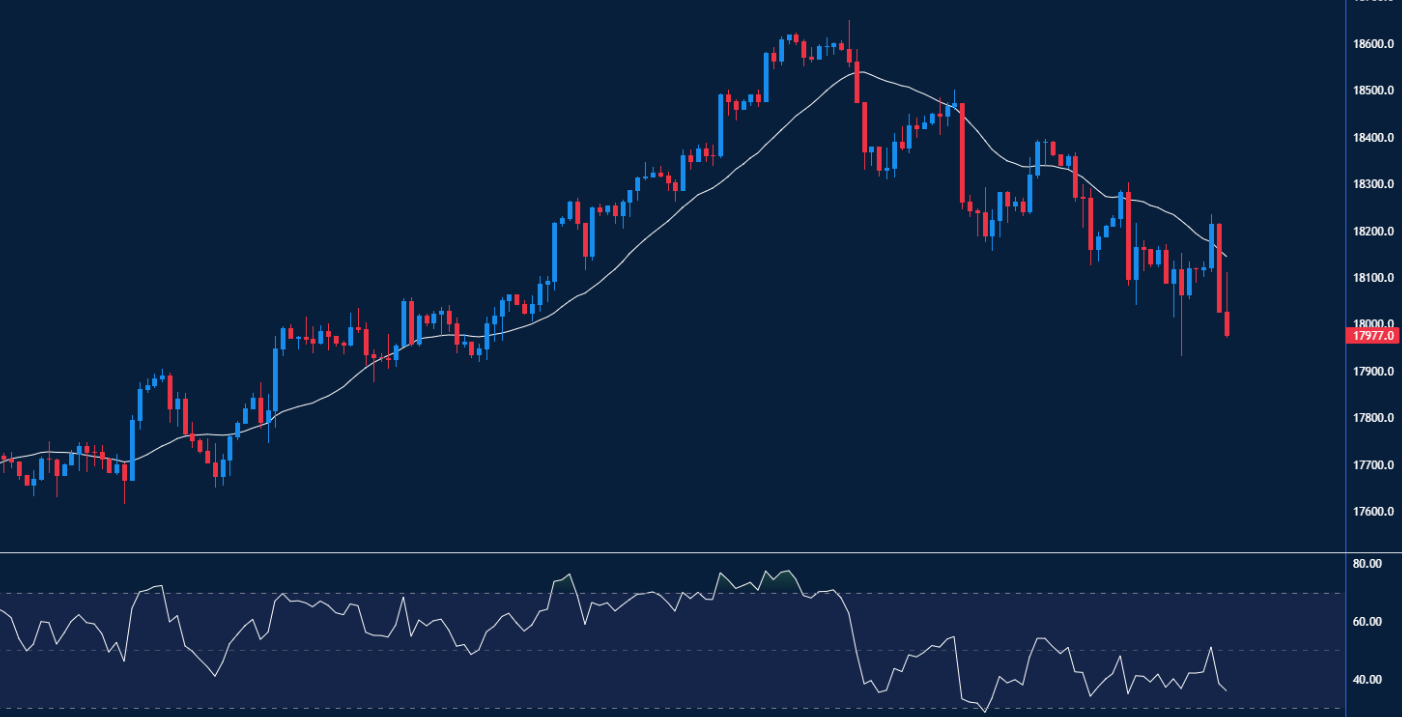TL;DR Key Takeaways
TL;DR
- A dead cat bounce is a temporary price recovery in a downtrend that misleads traders into thinking a reversal is occurring.
- Traders confirm a dead cat bounce with volume analysis, technical indicators, and broader market trends to avoid false optimism.
A falling market can sometimes experience a short-lived recovery, making it appear as though a reversal is happening. That’s where the dead cat bounce comes into play. This deceptive rally often lures traders into buying prematurely, only for the price to continue its downward trend. In this article, we’ll explore the dead cat bounce in detail, how to identify it, and how traders can navigate it effectively. Let’s dive in.
How Does the Dead Cat Bounce Work in Trading?
If you’ve ever wondered “How can I recognize a dead cat bounce on a chart?” or “What causes a dead cat bounce?”, the answer lies in understanding market sentiment and price action.
A dead cat bounce occurs when a sharp decline in price is followed by a brief recovery, only for the downtrend to resume. This pattern is often seen in bear markets or when a stock or asset experiences a significant loss due to negative news.

The rally may be fueled by short-covering, dip buyers, or temporary optimism, but without strong fundamentals, the price soon collapses again.
Appearance of a Dead Cat Bounce
A dead cat bounce typically appears as a V-shaped recovery, followed by another downward move. It is often mistaken for the beginning of a trend reversal, but it lacks the strength to sustain further gains.
Key Characteristics:
- A steep decline due to negative news, economic data, or bearish sentiment.
- A temporary rebound driven by short-term traders and dip buyers.
- Lack of strong volume support during the recovery.
- A resumption of the previous downtrend, leading to new lows.
Dead Cat Bounce as a Market Signal
A dead cat bounce is a continuation pattern, meaning it signals the market is still bearish. However, traders who misinterpret it as a true reversal may enter long positions prematurely, leading to losses when the price falls again.
This pattern is common in stocks, forex, and cryptocurrency markets, especially during economic downturns or crises.
Confirmation: The Key to Avoiding a Dead Cat Bounce Trap
Since a dead cat bounce can appear like a reversal, traders need confirmation before assuming the trend has changed. Key indicators include:
- Volume: If the recovery happens on low volume, it’s likely a dead cat bounce.
- Technical Indicators: Use RSI, MACD, or moving averages to gauge trend strength.
- News Events: If the fundamental reasons behind the decline remain unchanged, the bounce is likely temporary.
- Break of Key Levels: A real reversal typically breaks resistance levels with conviction.

Without these confirmations, traders should be cautious of false rallies.
Why Context Matters
Context plays a crucial role in distinguishing a dead cat bounce from a genuine recovery. Consider:
- Market conditions: A bear market or economic downturn increases the likelihood of false recoveries.
- Sector performance: If an entire industry is struggling, individual stocks may follow the trend.
- Previous support levels: A real reversal often finds strong support, while a dead cat bounce fails to establish new support zones.
Time Frames for Identifying a Dead Cat Bounce
A dead cat bounce can occur across different timeframes:
- Short-term traders may see it on 5-minute or 15-minute charts.
- Swing traders often identify it on daily or weekly charts.
- Long-term investors may witness it on monthly timeframes, especially in bear markets.
Larger timeframes tend to offer more reliable insights, whereas smaller timeframes require faster decision-making.
Example: How to Identify and Trade a Dead Cat Bounce
Imagine a stock drops from $100 to $60 due to poor earnings reports. Within a few days, it rebounds to $75, leading some traders to believe the worst is over. However:
- The volume remains low compared to the previous decline.
- RSI stays below 50, indicating weak momentum.
- News reports confirm ongoing financial troubles for the company.
A week later, the stock falls again to $50, proving that the recovery was just a dead cat bounce. Traders who entered long positions without confirmation suffer losses.

Limitations of Trading Based on the Dead Cat Bounce
While recognizing a dead cat bounce can be useful, there are risks:
- False signals: Sometimes, a bounce may actually be a reversal.
- Timing challenges: It’s difficult to predict when the bounce will end.
- High volatility: Markets can be unpredictable, leading to quick stop-outs.
To manage risks, traders should use stop-loss orders, proper risk management, and confirmation indicators before making trades.
Dead Cat Bounce vs. True Reversal
Traders often confuse a dead cat bounce with a real market reversal. Here’s how they differ:
- Dead Cat Bounce: Temporary recovery followed by a new low.
- True Reversal: Price forms higher highs and higher lows.
- Volume Comparison: A real reversal is supported by strong volume, whereas a dead cat bounce occurs with weak participation.
- Break of Resistance: A reversal breaks key resistance, while a dead cat bounce fails to hold gains.
What Type of Trading Strategy Suits the Dead Cat Bounce?
The dead cat bounce is commonly used in:
- Short-selling strategies: Traders wait for the bounce to fade and enter short positions.
- Breakout trading: If price fails to break resistance, traders position for further downside.
- Options trading: Using puts to capitalize on downward moves.
Risk management is essential when trading this pattern due to its high volatility.
Stay ahead of the market
with Tealstreet
Final Thoughts
This article explored the dead cat bounce, a deceptive price recovery in a downtrend. You’ve learned how to identify it, confirm its validity, and integrate it into your trading strategy.
Want to trade smarter? Tealstreet provides advanced tools to help you navigate volatile markets with precision.
Dead Cat Bounce FAQs
1. How can I identify a dead cat bounce?
Look for a temporary price recovery after a sharp decline, followed by a continuation of the downtrend.
2. Is the dead cat bounce reliable for trading?
Yes, but only with confirmation indicators like volume, RSI, and trend analysis.
3. Can it occur in all markets?
Yes, dead cat bounces appear in stocks, forex, crypto, and commodities.
4. How do traders profit from it?
Traders often use short-selling strategies or put options to capitalize on the next price drop.
5. What timeframes work best?
Larger timeframes provide more reliable signals, but day traders can spot short-term dead cat bounces.


